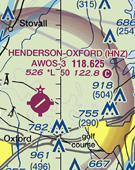Back to Basics
Over the past year or so while conducting flight tests and recurrent training, I’ve noticed an alarming trend: the almost total dependence on advanced navigation systems such as GPS, flight data systems, and the so-called glass cockpits.
While these are modern electronic marvels and add much to the field of navigation, they also present opportunities for disaster. Much like home computers, they are subject to “crashes.”
If your desktop computer decides to take a vacation, it is an inconvenience, but not life threatening. You may have to pack it up and take it in for repair, but eventually things get back to normal. Even a power failure in your home is usually just a temporary condition. In an airplane it can be a catastrophe.
Several years ago, a large airliner crashed shortly after takeoff because the static ports were blocked and the flight data computer was receiving incorrect information from the pitot static instruments. Weather was not a factor, but the pilots lost control of a perfectly good airplane because they failed to recognize the failure. They did not revert to the basics of flying, look out the window to see what was going on or fly by visual reference.
I’ve created problems such as this on flight tests and during recurrent training, and many times the pilot has been unable to cope because of an inability to navigate without the black boxes.
Doing recurrent training in a highly sophisticated, and well equipped, single engine airplane, I failed the electronic navigation equipment and asked the pilot to take me to an airport about 15 miles away. About 20 minutes later we were 30 miles from that airport.
The pilot had no paper charts on board and had totally forgotten how to navigate by pilotage and dead reckoning. He was lost on a beautiful, clear day. After the flight he thanked me for pointing out this deficiency and promised to regain his skills in basic navigation — and always to have sectional charts on board his airplane.
Another problem I see with all the fancy electronics is distraction. Just like your home computer, the GPS is probably capable of more things than you know. Don’t try to use them all. Spending too much time programming the GPS distracts from your flying, but more important, distracts from your visual scanning for traffic.
Once I timed an applicant on a flight test while he reprogrammed his GPS. He went a full two minutes without looking outside or checking his basic instruments. In that time he lost 500 feet of altitude and 60° of heading and the airplane was fast approaching a well developed steep spiral.
Here are some suggestions for pilots using this new, sophisticated equipment:
- Relearn your basic pilotage and dead reckoning and make occasional trips using these techniques.
- Complete a good flight log using your old E6B computer. Compute your estimated ground speed and see how it agrees with your planned ground speed. Sure it’s a little extra work, but it could help you avoid a problem in the future. Also, I believe you will find it puts some fun back into your flying.
- Once you have done this, plan a trip by pilotage and dead reckon- ing, but also set it up on your black boxes. See how they agree.
- Do not reprogram a GPS in flight if it takes more than 30 seconds. If you must reprogram it, do not do it all at once. Do it in 30-second inter- vals, even with an autopilot. Failure to look for traffic for more than 30 seconds can be fatal.
- Learn to use what you really need on your equipment and ignore its other capabilities. Once you have learned the basics, pick one of the more advanced capabilities and use it for a while. When you are comfortable with this, add another and so on. Don’t try to learn everything at once.
I have a good friend who recently retired from a major air carrier as number 2 on its seniority list. He told me what he did when he first checked out in the 747. The first trip he made was from New York to Los Angeles. Even though he went through a two-week school on the glass cockpit, he flew the first flight using only raw VOR data. He kept learning additional functions of the equipment in subsequent flights. That’s why, after 41 years with the airline, plus a lot of general aviation flying, he is accident free. The school was good, he said, but he noted you really don’t learn it until you apply the book knowledge in actual flight.


